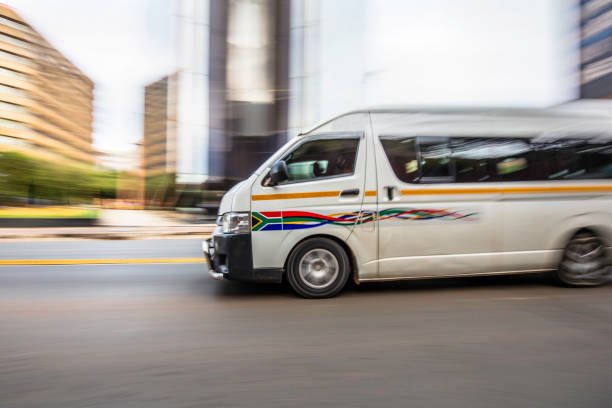Why do some South African drivers exhibit a sense of invincibility on the roads? What makes them believe they can disregard road safety protocols without facing the consequences? These are critical questions to ponder as South Africa grapples with alarming rates of road accidents, injuries, and fatalities.
Why do South Africans Feel Like They can Get Away with Unsafe Road Use Practices?
One possible explanation for this risky behaviour could be the perceived lack of law enforcement. In situations where drivers feel that they can easily evade penalties or sanctions, they might be more inclined to engage in unsafe practices like speeding, driving under the influence, or ignoring traffic signals.
Cultural attitudes also play a significant role. In some communities, risky driving might be normalized or even glamorized, making it difficult to instil a sense of personal responsibility for road safety.
Economic factors should not be underestimated either. In a country with a high rate of unemployment and economic disparity, some individuals might find themselves in circumstances where they take risks to save time or money, such as driving unroadworthy vehicles or overloading public transport vehicles.
The role of education and awareness cannot be ignored. Many South Africans may not be fully informed about the potential risks involved in unsafe driving, or about how their actions can endanger both their lives and those of other road users.
Efforts to change these behaviours must be multifaceted and involve various stakeholders, including government agencies, NGOs, and the general public. Enforcement of existing laws should be more stringent, and public awareness campaigns must be ramped up to educate people about the importance of road safety.
Understanding why some South Africans engage in unsafe road practices is the first step towards addressing this urgent issue. Only then can effective strategies be implemented to create a safer driving environment for everyone.
Statistics to Reflect On
According to the Road Traffic Management Corporation (RTMC), 1,451 people died on South Africa’s roads during the 2022/23 festive season, which spans from 1 December to 11 January each year for data consistency. While this represents a 13.9% decrease in road fatalities from the previous year, the number is still alarmingly high. The number of fatal crashes also saw a decline, going from 1,295 in 2021/22 to 1,211 in 2022/23.
It’s encouraging to note that the Western Cape experienced a 36.7% reduction in road deaths during this period, indicating that targeted road safety measures can be effective. However, the province of Gauteng showed a concerning uptick, with road deaths increasing from 275 to 290 over the festive period. This rise in one of the country’s most populous regions points to persistent issues like lax law enforcement, economic pressures, and cultural attitudes, among other factors discussed earlier.
Given these statistics, understanding the underlying reasons for risky road behaviour becomes even more vital. The decrease in fatalities suggests that some efforts are working, yet the data also underscores a desperate need for further intervention. Addressing the multifaceted causes—from lax law enforcement to lack of awareness—will require a concerted effort from various stakeholders to make South Africa’s roads safer for everyone.
10 Reasons Why do South Africans Feel Like They can Get Away with Unsafe Road Use Practices?
Why do some South Africans act as though they’re above road safety laws? What underlies the audacity to bend or break the rules without fear of consequence? Exploring the reasons can shed light on the bigger picture of road safety in the nation. Here are ten reasons, each accompanied by examples:
- Lax Law Enforcement: A lack of consistent traffic monitoring encourages risky behaviour.
- Example: Speeding with impunity because there are no visible traffic police on duty.
- Perceived Anonymity: The illusion that one can blend into the traffic without being singled out.
- Example: Running red lights in busy areas, thinking it’s too chaotic for anyone to notice.
- Social Norms and Cultural Attitudes: In certain circles, reckless driving is viewed as thrilling rather than dangerous.
- Example: Street racing on public roads as a form of social activity.
- Economic Pressures: Financial concerns can lead people to take risks, such as overloading vehicles to maximize profit.
- Example: Minibus taxi drivers cramming their vehicles with more passengers than allowed.
- Lack of Awareness: A deficit of road safety education leaves drivers uninformed about the risks they’re taking.
- Example: Texting and driving due to a lack of awareness about its lethal consequences.
- Bribery and Corruption: The belief that fines or penalties can be escaped through bribes.
- Example: Offering money to traffic officials to avoid receiving a speeding ticket.
- Peer Pressure: Wanting to conform to group norms or expectations can lead to dangerous driving.
- Example: Performing risky manoeuvres to impress friends.
- Impulsive Behaviour: Acting on a whim rather than considering the potential outcomes.
- Example: Cutting across multiple lanes without signalling due to impatience.
- Overconfidence: An inflated sense of one’s driving abilities can lead to risky decisions.
- Example: Minibus taxi drivers weaving recklessly through traffic, thinking they’re skilled enough to avoid accidents.
- Absence of Accountability: The idea that one can break the rules without facing real consequences.
- Example: Consistently parking in prohibited areas, confident that there will be no repercussions.
Understanding these factors is the starting point for any effective strategy aimed at improving road safety in South Africa. Given the alarming statistics, a nuanced approach to this complex issue is urgently needed.

